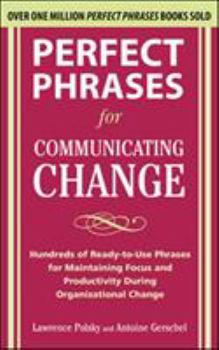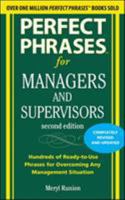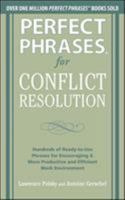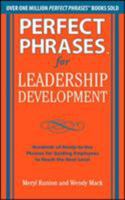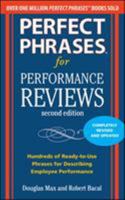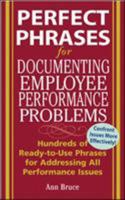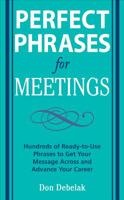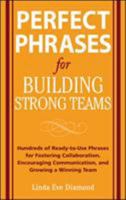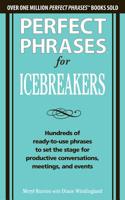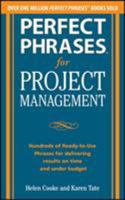Perfect Phrases for Communicating Change
(Part of the Perfect Phrases Series)
THE RIGHT PHRASE FOR EVERYSITUATION . . . EVERY TIME
Employees respond to organizational change with worry, fear, and sometimeseven panic. Your job is to keep them motivated and focused--so you mustchoose your words carefully during times of upheaval.
Perfect Phrases for Communicating Change has hundreds of ready-to-use phrasesfor ensuring your employees make the transition with clarity, commitment, andskill. Learn the most effective language for: Articulating new company initiativesResponding to questions with confidenceEasing employees' fearsClarifying roles and responsibilitiesAddressing resistance and performance problems
Praise for Perfect Phrases for Communicating Change
"Perfect Phrases for Communicating Change is a wonderful book, filled with practical, solid advice, suggestions, and examples for how to communicate effectively in a time of change."
John Krajicek, Executive Professor and Assistant Director of Business Communication Studies, Texas A&M University
"Communication during organizational change is everything. The right words at the right time can make all the difference between a successful and unsuccessful change initiative. This is a wonderful resource for finding the right words and sentiments to convey any type of change."
Robert J. Marshak, Ph.D., author of Covert Processes at Work: Managing the Five Hidden Dimensions of Organizational Change
"Finding the right words to communicate change is challenging, even for the best of managers. In this user-friendly text, Lawrence and Antoine provide hundreds of practical phrases to better prepare managers for the task. The book is rich with insightful suggestions on change messaging considerations and construction."
Edward Ferris, Assistant Professor, The New School for Management and Urban Policy
"In my over 20 years of running companies and corporate divisions I have seen a direct correlation between the quality of communication of my managers and their success in the business world. If you aspire to be an effective, efficient, and productive leader then I highly recommend this book. It is an outstanding reference guide and road map for pragmatic yet inspirational communication techniques."
Mitch Pisik, President and CEO, Breckwell Products










